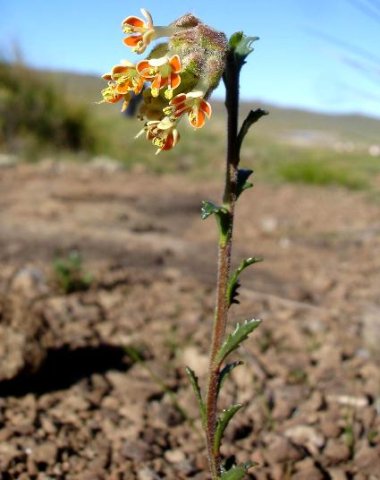Glumicalyx lesuticus

Author: Ivan Lätti
Photographer: Judd Kirkel Welwitch
This picture of Glumicalyx lesuticus, commonly the mountain willowherb, shows a single stem topped by a compact flower spike in January. This is not a South African species, but close, in Lesotho. The plant grows several erect stems from its stout, woody rootstock, the upper parts herbaceous. The widely spaced leaves seen in the picture are alternate to spiralling, sessile and narrowly obovate to elliptic with shiny, dark green surfaces and serrated margins.
The flowers grow in compact, rounded, head-like spikes at stem tips. The green and purple calyx lobes are densely covered in whitish hairs. The corolla tube and outside surfaces of the corolla lobes are creamy to white. The inside or upper corolla lobe surfaces are bright orange with cream showing on the margins. The corolla has five lobes, oblong to broadly ovate, rounded at the tips. Flowering happens in summer.
The distribution of the species lies in this easterly border area of Lesotho, near the Sani Pass, not in South Africa.
The habitat is sparsely grassed slopes in gravelly soil, grasslands and disturbed, bare patches or among rocks at high altitudes, between 2550 m and 3180 m (Springer, 2019: The role of pollinators as ecological drivers of diversification in the Drakensberg Mountain Centre endemic genus Glumicalyx (Scrophulariaceae, Limoselleae), University of the Witwatersrand; iNaturalist; JSTOR).

